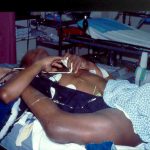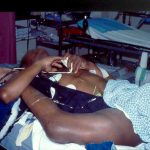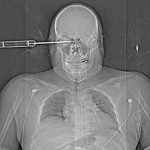Diaphragm injuries are notoriously hard to detect, and there is a significant rate of delayed or missed diagnosis. Today I’ll offer a few practical tips on finding and managing this rare injury.
Mechanism is important. Penetrating injury is more common, and it can be really tough to diagnose this injury in stabs to the lower chest. Anything below the nipples is suspect. Blunt injury requires substantial force. This is seen in deceleration injuries, usually with a crush component to the abdomen. Ejection and partial ejection is common.
Left sided injury is much more common than right. The liver probably diffuses the force more evenly, protecting the right diaphragm. Be very skeptical if a radiologist tries to tell you the patient has a right diaphragm injury.
Patients have significant symptoms with blunt injury. Respiratory distress is common on the left, and deep visceral pain on the right if the liver partially herniates into the chest. Serious associated injuries are common due to the high energy involved.
Diagnosis is difficult. CT is a very good, but imperfect, tool. Coronal and sagittal reconstructions can be very helpful.
If you are inclined to explore for a possible diaphragm injury in a stable patient, consider laparoscopy first. But warn the anesthesiologist! If your patient has the injury, they will rapidly develop a complete pneumothorax, so you need to be ready to quickly insert a chest tube.
Caress the diaphragm to find small holes. Place your hand in the palm up position so your fingers will drop into any defect. Be thorough, since small knife and bullet wounds are easy to miss, especially when located posteriorly.
Related post:



